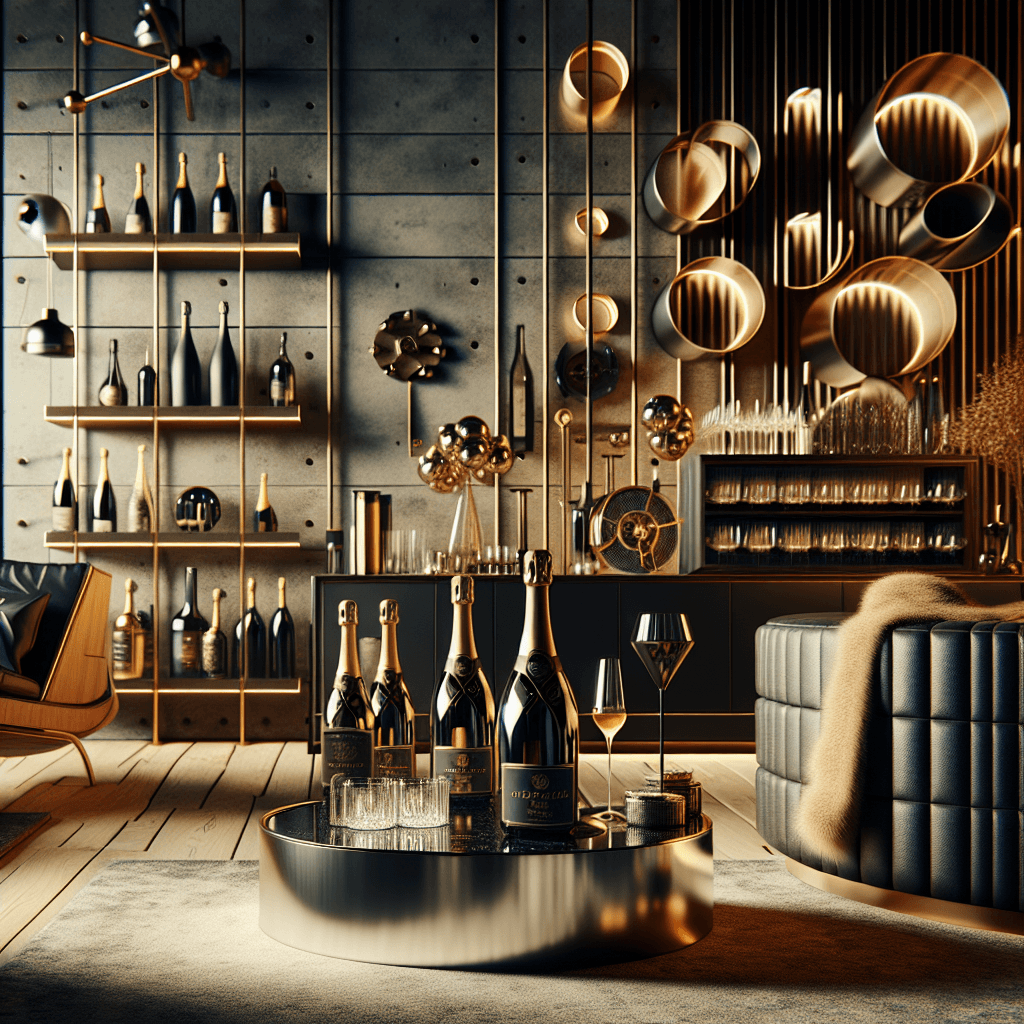Tips on cellaring fine Champagne for long-term value and taste
Champagne, a symbol of celebration and sophistication, requires meticulous care to preserve its quality and enhance its aging potential. This article delves into the art of cellaring fine Champagne, offering expert tips and cultural insights to ensure that every bottle reaches its peak.
- Understanding Champagne: More Than Just Bubbles
- Creating the Ideal Conditions for Champagne Storage
- Practical Tips for Long-Term Champagne Storage
- The Science and Art of Aging Champagne
- Selecting Champagnes with Aging Potential
- Cultural Significance of Aged Champagne
- Preserving Legacy and Luxury
Understanding Champagne: More Than Just Bubbles
Champagne, a prestigious sparkling wine, originates from the Champagne region in France and is celebrated worldwide for its quality and heritage. The creation of Champagne involves a secondary fermentation process in the bottle, known as méthode champenoise, which imparts unique flavors and the characteristic effervescence.
Champagne’s complexity and allure are not merely due to its festive sparkle but also its capacity for transformation over time through proper aging. Unlike most white wines, many Champagnes can benefit significantly from extended cellar time, developing deeper flavors and more intricate aromas.
Historical Perspective on Champagne Storage
The tradition of cellaring Champagne has roots deep in the cellars of aristocratic European households, where bottles were kept for decades to develop richness and complexity. This practice has evolved, but the principles of careful storage remain paramount in preserving and enhancing the wine’s inherent qualities.
Creating the Ideal Conditions for Cellaring Champagne
To maximize the aging potential of Champagne, it is crucial to create an environment that mimics the ancient cellars used in its traditional storage. The ideal conditions include:
- Temperature: Consistency is key, with an optimal range of 10-12°C (50-54°F). Fluctuations can accelerate aging and risk damaging the wine.
- Humidity: A humidity level of 70% is ideal to prevent cork drying while discouraging mold growth.
- Light: Champagne should be stored in darkness as UV rays can degrade and prematurely age the wine.
- Vibration: Minimizing vibration is essential as it can disturb the sediment in the bottle, affecting the aging process and clarity of the wine.
Technological Advances in Storage
Modern innovations such as climate-controlled wine refrigerators offer an accessible solution for enthusiasts who do not have access to traditional wine cellars. These specialized units maintain constant temperature and humidity, providing an ideal environment for aging Champagne.
Practical Tips for Long-Term Champagne Storage
Storing Champagne with care is both an art and a science. Here are practical tips to ensure optimal aging:
- Positioning: Store bottles horizontally to keep the cork moist, which is crucial for maintaining its seal and preventing air from entering the bottle.
- Inventory Management: Keep a detailed record of your Champagne collection to monitor aging and enjoy each bottle at its peak.
- Isolation: Store Champagne away from strong-smelling substances as it can absorb odors through the cork over time.
Handling with Care
When moving or arranging bottles, handle them gently to avoid agitating the sediment. This is particularly important for older vintages, where the sediment has had more time to develop.
The Science and Art of Aging Champagne
Aging Champagne transforms its flavor profile, mellowing the acidity and allowing the characteristics of the terroir to come forward. This process involves complex chemical reactions, including the slow integration of gases and the development of brioche-like flavors from yeast autolysis.
Understanding the Phases of Maturation
The aging of Champagne can be seen as occurring in three stages:
- Initial Maturation: This phase involves the integration of carbon dioxide and the beginning of yeast autolysis, where dead yeast cells break down, adding complexity to the wine.
- Mid-term Aging: During this period, the fruit characteristics begin to diminish, and more nutty and toasty flavors develop.
- Extended Aging: In this final stage, the Champagne reaches a balance of richness and complexity, with diminished fruitiness and increased tertiary aromas such as almond, dried fruit, and spice.
Selecting Champagnes with Aging Potential
Not all Champagnes are suited for long-term aging. Vintage Champagnes, made from the best grapes in a single year, typically have the structure and balance to improve with age. Non-vintage Champagnes, while delightful on release, are generally crafted for more immediate consumption.
Key Indicators of Aging Potential
When selecting a Champagne for aging, consider the following:
- Acidity: Higher acidity levels can indicate a greater potential for aging as they preserve freshness over time.
- Sugar Content: Champagnes with a higher dosage (sugar added post-fermentation) may age differently, influencing the wine’s balance.
- Producer Reputation: Renowned houses with a history of quality and consistency are often reliable choices for age-worthy Champagne.
Cultural Significance of Aged Champagne
Aged Champagne holds a revered place in the world of fine dining and luxury celebrations. It represents not only a culinary delight but also a heritage of winemaking that spans centuries. In elite social circles and among collectors, aged Champagne is prized for its rarity and the depth of its flavor profile.
The Role of Aged Champagne in Gastronomy
In gastronomy, aged Champagne is often paired with rich, complex dishes that can complement its evolved flavors. It is also a popular choice for marking significant occasions, symbolizing both luxury and the passage of time.
Preserving Legacy and Luxury
Proper storage and careful selection of Champagne are essential to enjoying its full potential as it matures. By embracing the techniques and insights shared here, enthusiasts can protect their investment and enhance their appreciation of this exquisite beverage.
For further reading on the intricacies of Champagne production and storage, consider exploring resources from authoritative sources such as the Comité Champagne.



